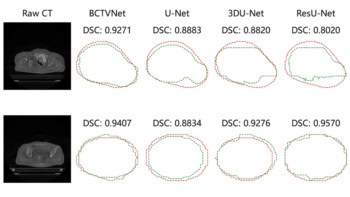
The condensed-matter physicist Tony Bland from Cambridge University in the UK died on 2 December at the age of 49. Bland had a wide range of research interests, but was best known for his pioneering work on the magnetic properties of thin films. In particular, he developed techniques to “inject” — and also detect — spin-polarized electrons into semiconductors such as silicon.
Such techniques are essential in the emerging field of “spintronics”, which could lead to the development of devices that exploit the spin as well as the charge of electrons. Because the spin of an electron can be switched from one state to another much faster than charge can be moved around a circuit, spintronic devices are expected to operate faster and produce less heat than conventional microelectronic components.
Bland also made seminal advances in the field of biomagnetism, in particular the use of magnetic tags for bioassays and chaired an international workshop on this topic organised by the European Science Foundation in September.
Born in Middlesbrough on 19 September 1958, Bland gained a first-class degree in physics from Cambridge in 1980. This was followed by a PhD in surface particle scattering at the Cavendish Laboratory, under the supervision of Roy Willis. After a year as a research scientist at the Institute Laue-Langevin in Grenoble, France, and three years as a research Fellow at the Clarendon Laboratory at Oxford University, Bland returned to Cambridge in 1987.
“Tony’s group is recognised as a world leader in the field of nanomagnetism, focusing on the atomic-scale origins of magnetism, spintronics, magnetic nanostructures and materials,” says Peter Littlewood, head of physics at Cambridge. “He was held in high esteem and those who met him were stimulated by his enthusiasm and charisma.”
A fellow of Selwyn College and professor in the Cavendish Laboratory, Bland held several visiting professorships and was awarded a number of scholarships and prizes including the Peter Wohlfarth prize from the Institute of Physics. He was also a highly accomplished pianist, who could have pursued a career as a professional musician. More recently he and his wife Catherine developed a passion for sailing, co-opting the more able members of his group as crew.
Bland wrote or co-wrote over 350 scientific papers and edited three books on magnetism and spintronics. His final article, entitled “The spintronics challenge”, which he co-wrote with Kiyoung Lee and Stephan Steinmuller, will appear in the January 2008 issue of Physics World. Bland had completed the finishing touches to it shortly before his death. His wife Catherine had died just a few days earlier.



